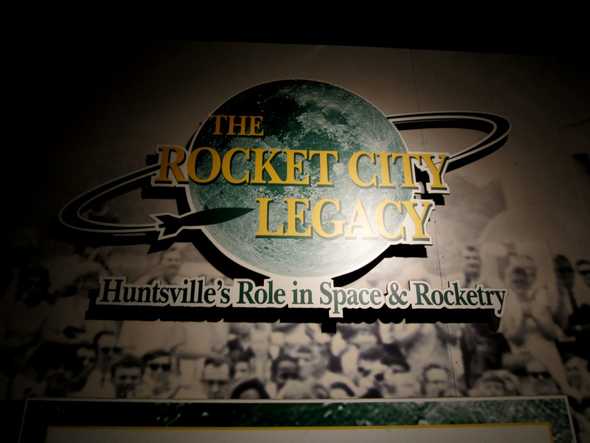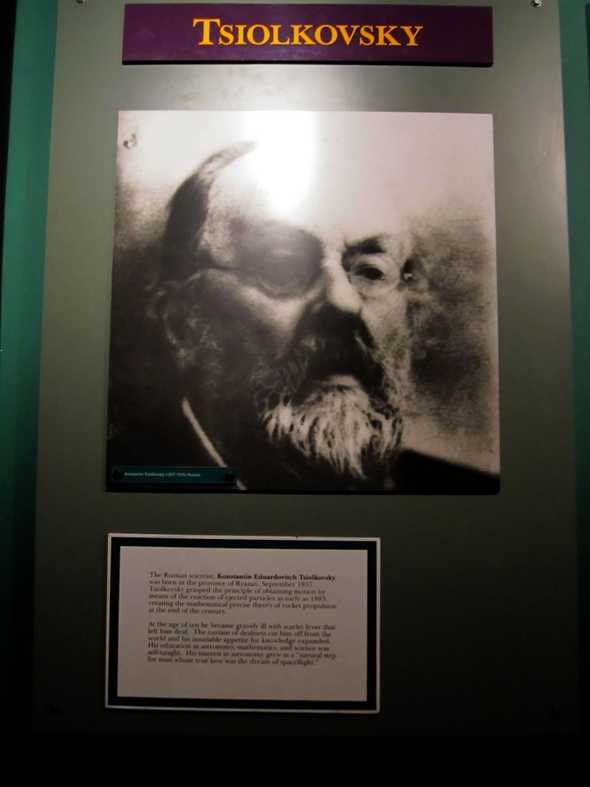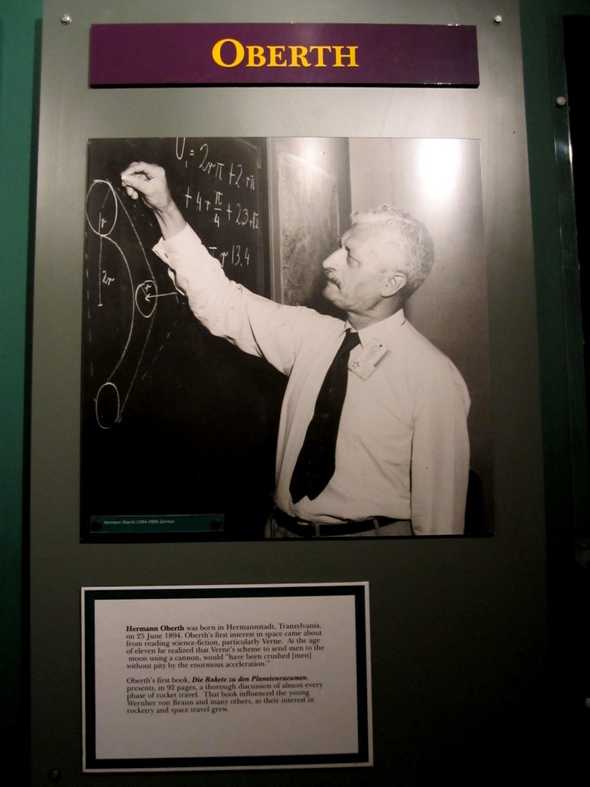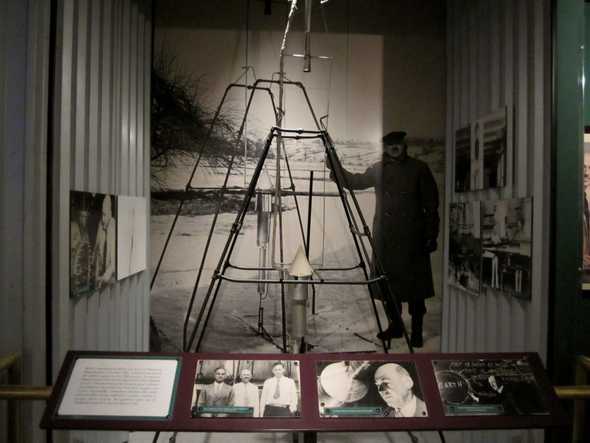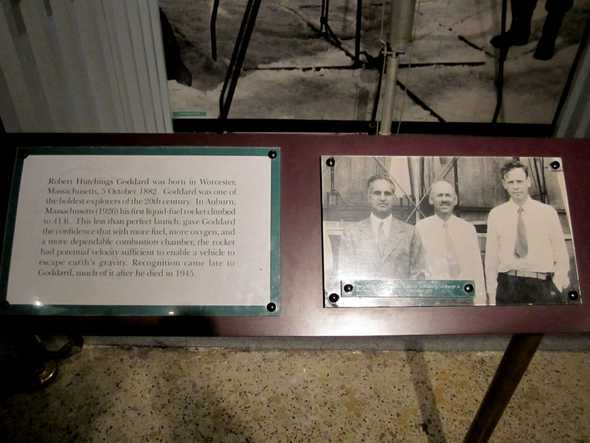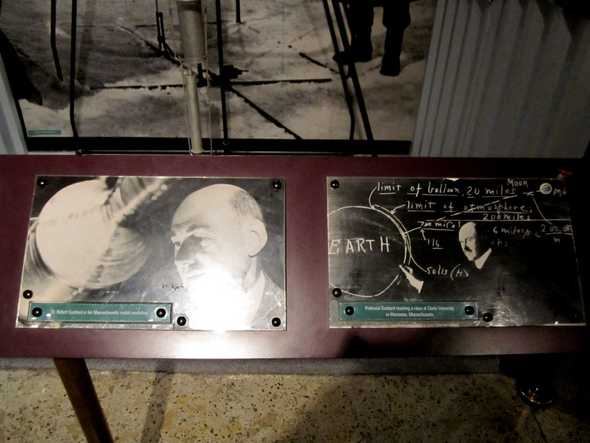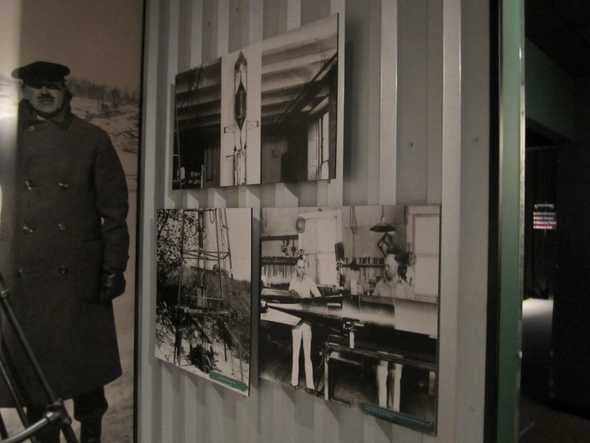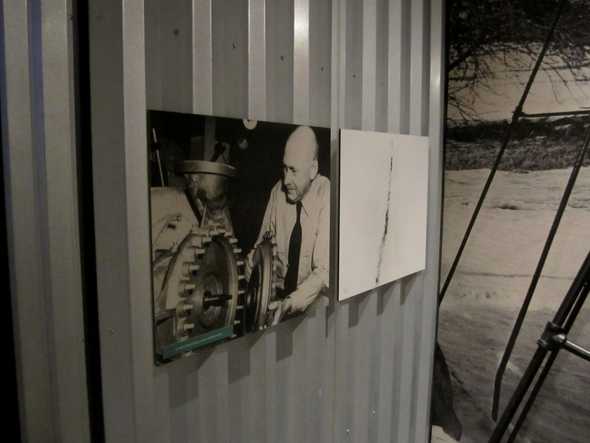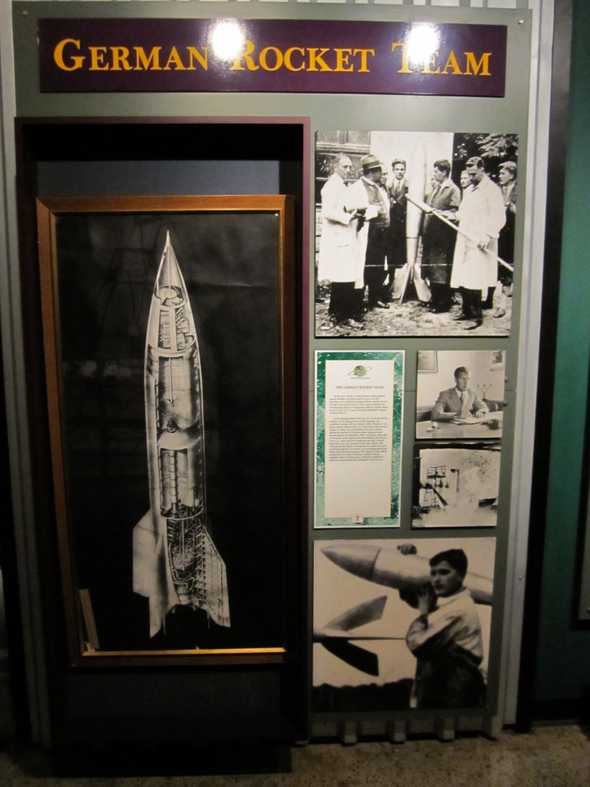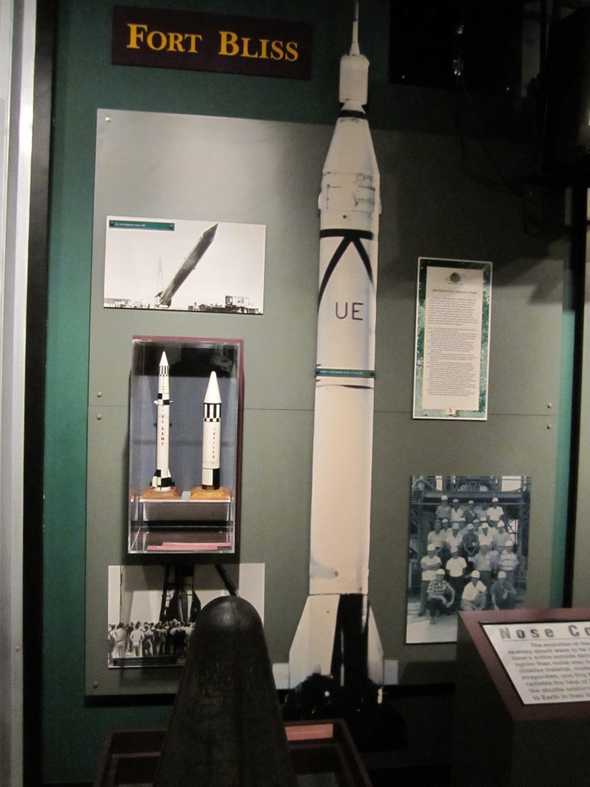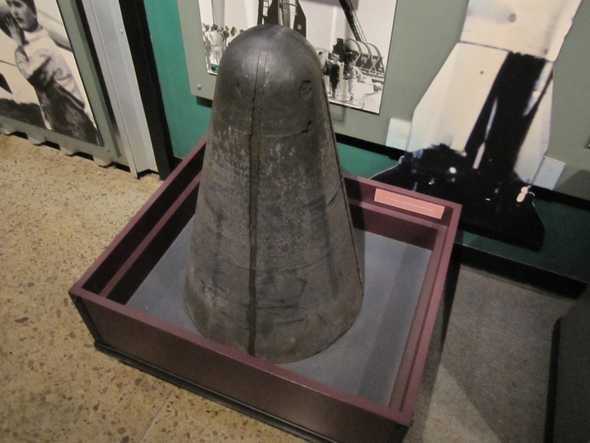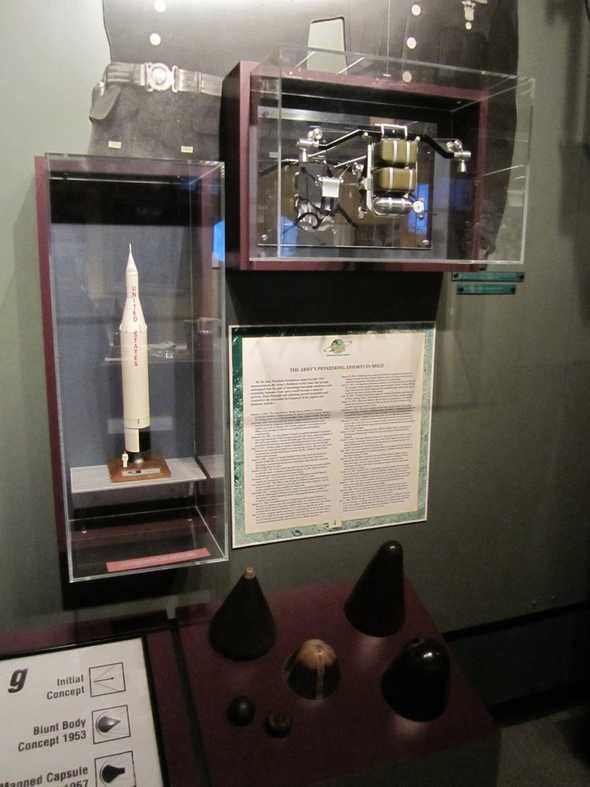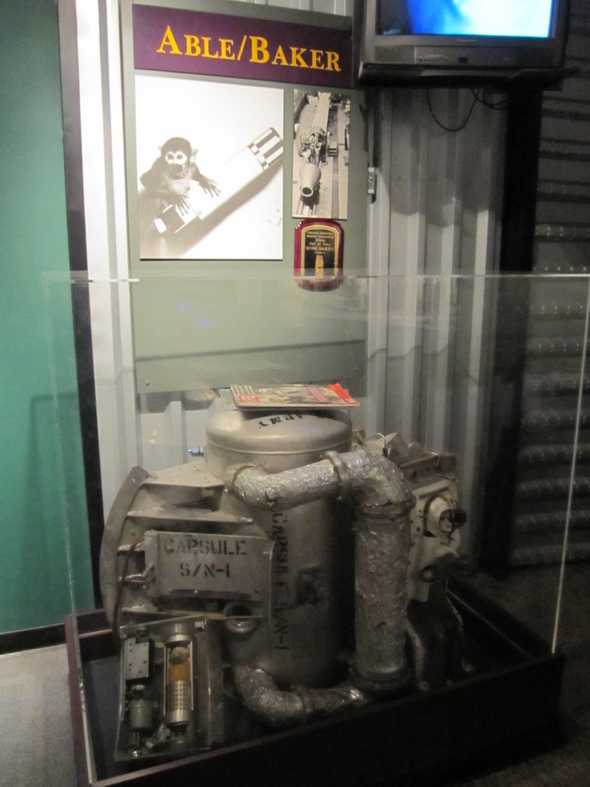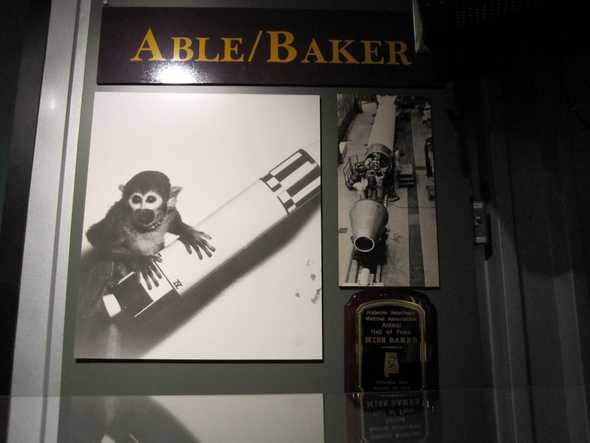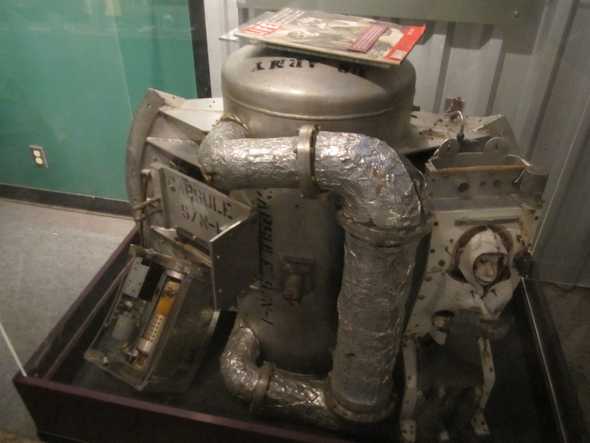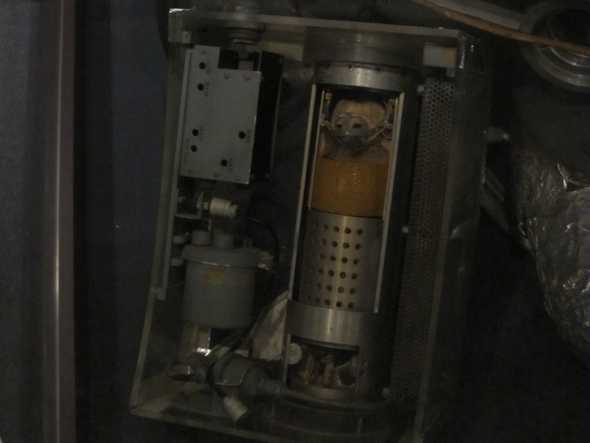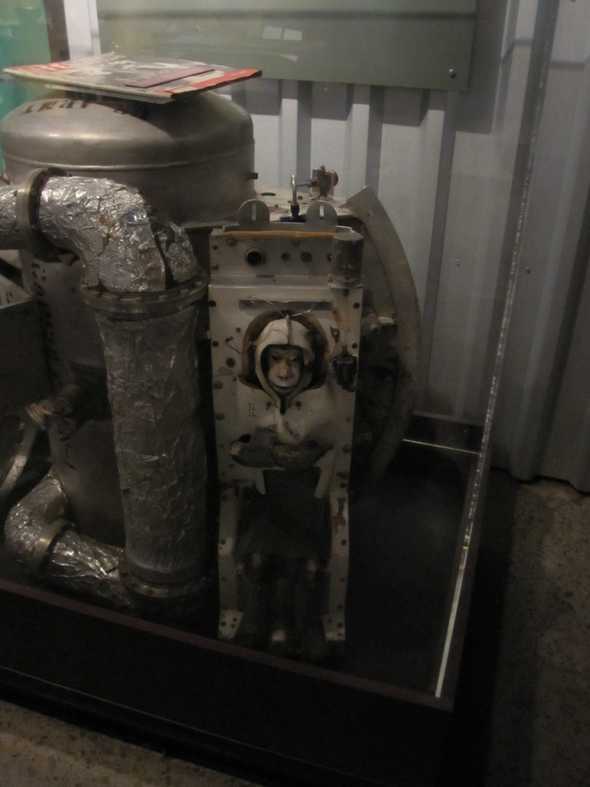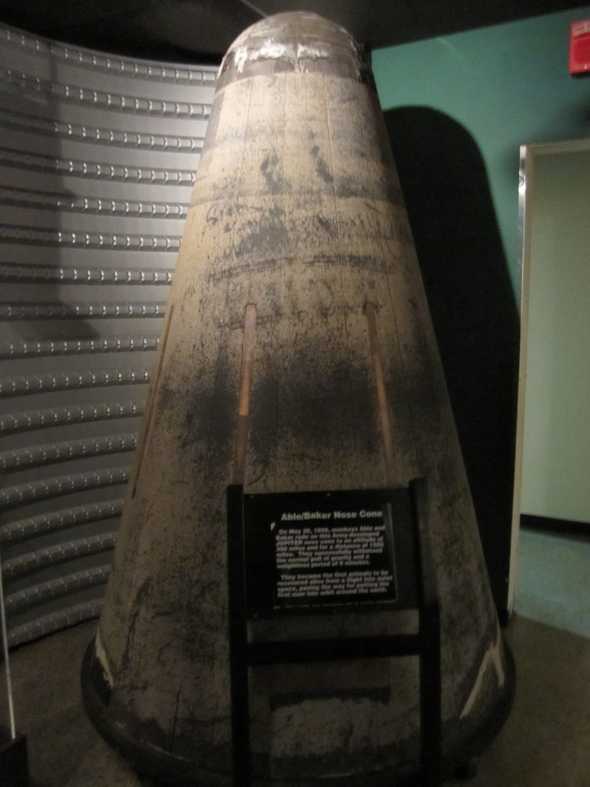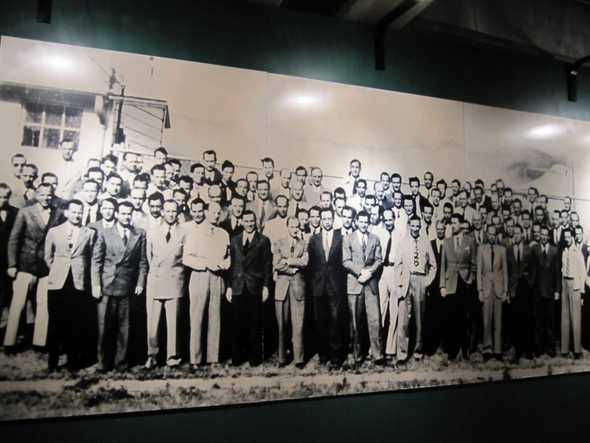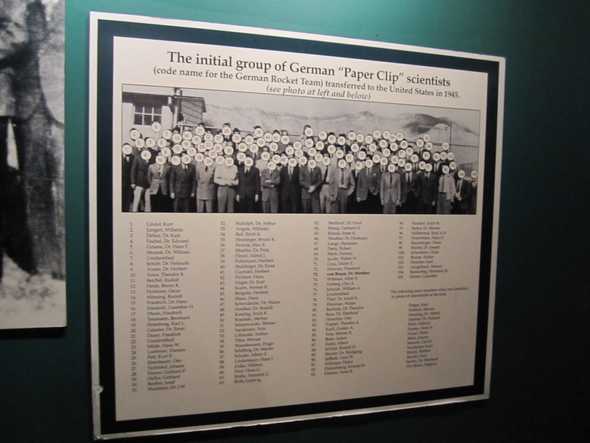Rocket City Legacy
Huntsville, Alabama played an important role in the Nation’s space program in the 1950s. One of the exhibits at the U.S. Space and Rocket Center in Huntsville detailed the events and milestones including the first American satellite, the Hubble Space Telescope, the Space Shuttle, and the International Space Station. Here is part one of the exhibit from February 2010.
The Early PioneersThroughout much of history, people have dreamed about rockets and space travel. Written accounts of such notions go back as far as 2nd-century Greece, and the Chinese are believed to have used rockets for warfare as early as AD 1232. But it wasn’t until the late 19th and early 20th centuries that serious attempts were made to address the theoretical and technical challenges of space travel.
At the very end of the 19th century, the Russian theoretician Konstantin E. Tsiolkovsky was among the first to derive the fundamental rocket equations and also suggested the concept of liquid-fueled rockets with multiple stages. In 1923, Hermann Oberth, a German mathematician, published the hook “The Rocket Into Interplanetary Space” which contained important expositions on the fundamentals of rocket propulsion and inspired a new generation of rocketry pioneers.
Meanwhile, an American professor Robert H. Goddard had already addressed many of the mathematical principals in the booklet title “A Method of Reaching Extreme Altitudes”. His subsequent research center on practical problems such as fuel chemistry, pumps, welding, insulation, and guidance and control. On March 16, 1926, Goddard successfully launched the world’s first liquid-fueled rocket. It rose to an altitude of only 41 feet and traveled a mere 184 feet horizontally. But it marked the birth of the space age — and the world would never again be the same.
The Russian scientist, Konstantin Eduardovitch Tsiolkovsky, was born in the province of Ryazan, September 1857. Tsiolkovsky grasped the principle of obtaining motion by means of the reaction of ejected particles as early as 1883, creating the mathematical precise theory of rocket propulsion at the end of the century.At the age of ten he became gravely ill with scarlet fever that left him deaf. The curtain of deafness cut him off from the world and his insatiable appetite for knowledge expanded. His education in astronomy, mathematics, an science was self-taught. His interest in astronomy grew as a natural step for man whose true love was the dream of spaceflight.
Hermann Oberth was born in Hermannstadt, Transylvania, on 25 June 1894. Oberth's first interest in space came about from reading science-fiction, particularly Verne. At the age of eleven he realized that Verne's scheme to send men to the moon using a cannon, would "have been crushed [men] without pity by the enormous acceleration."Oberth’s first book, Die Rakete zu den Planetenraeumen, presents, in 92 pages, a thorough discussion of almost every phase of rocket travel. That book influenced the young Wernher von Braun and many others, as their interest in rocketry and space travel grew.
Robert Hutchings Goddard was born in Worcester, Massachusetts, 5 October 1882. Goddard was one of the boldest explorers of the 20th century. In Auburn, Massachusetts (1926) his first liquid-fuel rocket climbed 41 ft. This less than perfect launch, gave Goddard the confidence that with more fuel, more oxygen, and a more dependable combustion chamber, the rocket had potential velocity sufficient to enable a vehicle to escape earth's gravity. Recognition came late to Goddard, much of it after he died in 1945.
The German Rocket TeamIn the early 1930s, a young German rocket engineer named Wernher von Braun and his team of rocket specialists were enlisted to design ballistic missiles for the German Army and Air Force. Their work resulted in the development of the A-4 long-range ballistic missile (better known as the “V-2”) — one of the most formidable weapons of World War II.
In the closing months of the war, Dr. von Braun led the majority of his colleagues out of East Germany and established contact with the Western Allies. Thanks to von Braun and the efforts of the U.S. Army led by then-Colonel Holger N. Toftoy, the United States was able to obtain substantial amounts of German rocket equipment and documentation. By September 1945, von Braun, along with 118 German rocket experts and their families, had arrived in the U.S. under special arrangement through “Project Paperclip” and were stationed at Fort Bliss, Texas. The “German Rocket Team” as the group was called, was soon modifying captured V-2 missiles, test-launching them from White Sands Proving Ground in New Mexico. Their efforts enabled the U.S. Army to develop a ballistic missile capability which would become a vital part of American defensive arsenal during the subsequent Cold War era.
The Redstone Arsenal YearsOn June 1, 1949, Huntsville’s Redstone Arsenal was officially designated as the site of the Army’s Ordnance Rocket Center. By spring, 1950, Dr. von Braun and his German Rocket Team had arrived at Redstone. They quickly began researching, developing, and testing free rockets, propellants, and jet-assisted take-off vehicles (“JATOs”) while continuing to research and develop guided missiles.
Though the emphasis was initially on military uses of rocket technology, thanks in part to Dr. von Braun’s influence the Redstone facility soon became a vital part of America’s civilian space program.
June 1, 1948 - Redstone Arsenal is designated the official site of the U.S. Army’s Ordnance Rocket Center.
October 28, 1949 - The Secretary of the Army approves the transfer of guided missile mission at Fort Bliss, Texas, to Redstone Arsenal. The German rocket, headed by Dr. von Braun, begins making the Huntsville area its new home in 1950.
July 24, 1950 - The Army’s first missile, utilizing a modified V-2 rocket for its first stage, is successfully launched from Cape Canaveral, Florida. It attains a horizontal distance of 25 miles.
May 1, 1951 - The Secretary of Army grants formal approval to plan, develop, test and launch the Army’s first heavy ballistic missile. April 8, 1952 - The Army’s Redstone missile officially receives its popular name. Previously, this missle was known at various times and places as the Hermes C1, Major, Ursa, XSSM-G-14, and XSSM-A-14.
August 20, 1953 - The Army’s Redstone missile is successfully test-launched for the first time from Cape Canaveral, Florida. September 15, 1954 - Dr. von Bruan publishes a proposal to launch “A minimum satellite vehicle” using existing Army Ordnance Corps hardware. The plan is later expanded into a joint Army-Navy proposal called Project Orbiter. However, the Army’s official role in the U.S. space satellite program is delayed after higher authorities elect in 1955 to pursue Project Vanguard.
November 11, 1954 - Thirty-nine of Redstone Arsenal’s German-born scientists are sworn in as U.S. citizens. On April 14 of the following year, an additional 103 German-born project scientists, technicians, and family members — including Dr. von Braun — take the U.S. citizenshop oath at Huntsville High School.
July, 1955 - President Eisenhower announces that the U.S. will endeavor to construct man-made satellites to orbit the Earth. For the first time, space ranks as an official national priority.
Nose Cone TestingThe evolution of the blunt body concept allowed the hot re-entry shock wave to be absorbed and dissipated over the nose cone’s entire outside skin. At the same time, a material that would be lighter than metal also had to be developed. The answer was an ablative material, made up of silica and epoxy. As it heats up, it slowly evaporates, one tiny bit after another, and chars black. The black char radiates the heat of the nose cone and you’ll notice that the bottom of the shuttle orbiters are black. To help bring the early astronauts back to Earth in their tiny capsules, they turned it around, blunt side down.
The Army's Pioneering Efforts In SpaceBy the time President Eisenhower made his July 1955 announcement, the Army’s Redstone rocket team had already anticipated that the goal of launching man-made satellites — and eventually humans — into space would become a national priority. Their foresight and planning proved invaluable and resulted in the successful development of the Jupiter and Redstone missiles.
February l, l956 - The Anny Ballistic Missile Agency (ABMA) is oficially activated at Redstone Arsenal. Initially, the agency’s mission is purely military: the fielding of the Army’s first intermediate range ballistic missile, the Jupiter.
April/May 1956 - Development of the Army’s Jupiter missile proceeds. The ABMA believes it can use a Jupiter or Redstone missile to launch America’s first satellite into orbit by January 1957, but the proposal is turned down by the Office of the Secretary of Defense out of political and philosophical considerations.
September 20 l956 - An Army Jupiter C missile (a modified Redstone) is launched from Cape Canaveral. It flies an unprecedented 3,355 miles, attains an altitude of 682 miles, and reaches a velocity of l6,000 mph. The missile could have propelled its fourth stage into Earth orbit had permission to do so been granted.
May l5, l957 - Another Jupiter C missile is launched in order to test the thermal behavior of a scaled-down Jupiter nose cone during reentry. The nose cone is not recovered, but onboard instruments indicate that the “ablative” type of heat shield works as hoped.
August 8, 1957 - A Jupiter C missile launched from Cape Canaveral reaches an altitude of 600 miles. Its scaled-down nose cone is recovered 1,300 miles down range, representing the first time a man-made object has been retrieved after having flown in space.
October 4, l957 - The Soviet Union’s Sputnik I becomes the first man-made satellite to orbit the Earth; it remains in orbit until January 4, 1958. This momentous event adds new urgency to America’s space efforts.
November 3, 1957 - In an impressive encore, the USSR places a second Sputnik satellite into Earth orbit where it remains until April 13, 1958.
November 21, 1957 - The Office of the Secretary of Defense instructs the Army to launch two Jupiter C vehicles to carry Dr. James Van Allen’s Explorer I and II cosmic radiation-detecting satellites into Earth orbit.
December, 1957 - Looking ahead to future needs, the Army Ballistic Missile Agency sends the Department of Defense a proposal to develop a booster capable of developing 1.5 million pounds of thrust. This proposed booster will eventually be known as the Saturn.
January 31, 1958 - A modified Jupiter C missile successfully places Explorer, the first U.S. satellite, into orbit around the Earth. The mission results in the discovery of the Earth’s Van Allen radiation belts. There is dancing in the streets of Huntsville as America celebrates its new status as a spacefaring nation.
May 18, 1958 - A Jupiter missile carrying the United States’ first tactical type reentry nose cone is fired by the Army from Cape Canaveral. This is also the first flight test for first and second stage separation. In less than five hours the nose cone is retrieved, marking the world’s first recovery of an IRBM nose cone.
March 27, 1958 - Following the success of the Explorer project, the Secretary of Defense rewards the Army Ballistic Missile Agency by giving it an even more ambitious assignment: to develop and launch two lunar probes.
July 17, 1958 - An important milestone is reached as the Army launches the first test of a complete inertial guidance system aboard a Jupiter missile. Lifting off from Cape Canaveral, the missile impacts on the predicted target and its nose cone is recovered less than two hours after launch.
July 29, 1958 - President Eisenhower signs the National Aeronautics and Space Act of 1958, creating NASA — the National Aeronautics and Space Administration.
August 15, 1958 - The Army Ballistic Missile Agency’s proposal for a 1.5 million-pound-thrust booster is approved, clearing the way for work to begin on the powerful multistage Saturn vehicle.
December 6, 1958 - The Army launches its first lunar probe, Pioneer III, using a four-stage Juno II vehicle (a modified Jupiter II missile). Although the probe fails to reach the moon, it still proves to be a scientific success, transmitting valuable information about radiation intensities as far out as 65,000 miles from Earth.
December 13, 1958 - A squirrel monkey named Gordo becomes the first passenger ever to ride in the nose cone of a Jupiter missile. Gordo’s medical sensors send back highly useful data for Army and Navy medical research into the bio-medical effects of space flight.
January 8, 1959 - NASA assigns the Army Ballistic Missile Agency the mission of developing Redstone-type vehicles for use in the Mercury manned satellite effects of space flight.
March 3, 1959 - The Army launches Pioneer IV, the second Army vehicle to carry a lunar probe. It reaches a velocity of more than 24,560 mph and passes within about 36,000 miles of the moon, eventually going on to become the first U.S. satellite in permanent orbit around the sun.
May 1959 - The Army completes a 4-volume study on its proposed Project Horizon, which details all aspects of a national program to establish a manned outpost on the moon’s surface by 1966.
May 28, 1959 - The flight of monkey’s Able and Baker aboard a Jupiter missile signifies the first successful recovery of living creatures returning to Earth from outer space. The two “space monkeys” withstand speeds of over 10,000 mph and their safe return represents an important early step toward putting humans in space.
October 13, 1959 - Explorer VII is successfully placed in Earth orbit, become the fourth satellite launched by the Army Ballistic Missile Agency. It contains seven experiments designed to extend mankind’s knowledge of outer space particularly cosmic radiation. It also opens up a new era in global meteorology.
January 7, 1960 - The Army successfully fires the first Mercury-Redstone booster engine — the same type of engine which will soon propel America’s first astronaut on his historic sub-orbital space flight.
April 29, 1960 - Even as preparations are being made to launch America’s first manned space vehicle atop the Mercury-Redstone booster, the Army Ballistic Missile Agency is already conducting its first static firing of all eight Saturn booster engines. The successful test lasts for 8.07 seconds.
July 1, 1960 - NASA’s George C. Marshall Space Flight Center is officially activated with Dr. Wernher von Braun as its first director. About 4,000 civilian employees of the Army Ballistic Missile Agency (including the von Braun team) and $100 million worth of buildings and equipment at Redstone Arsenal and Cape Canaveral are transferred by the Army to NASA.
Able/Baker Nose ConeOn May 28, 1959, monkeys Able and Baker rode on this Army-developed JUPITER nose cone to an altitude of 300 miles and for a distance of 1500 miles. They successfully withstood the normal pull of gravity and a weightless period of 9 minutes.
They became the first animals to be recovered alive from a flight into outer space, paving the way for putting the first man into orbit around the earth.
The initial group of German "Paper Clip" scientists (code name for the German Rocket Team) transfeered to the United States in 1945.

